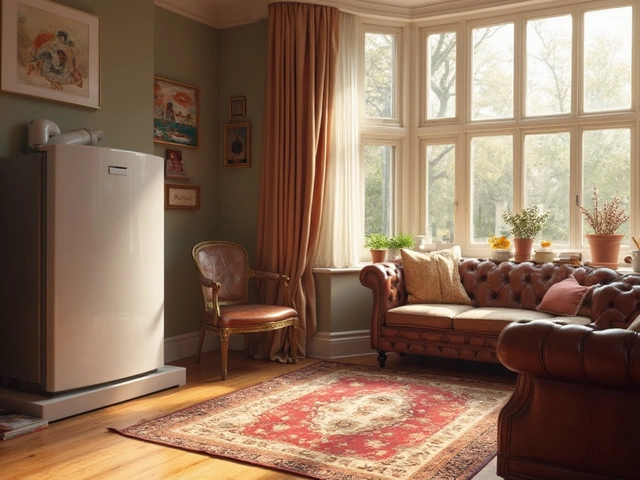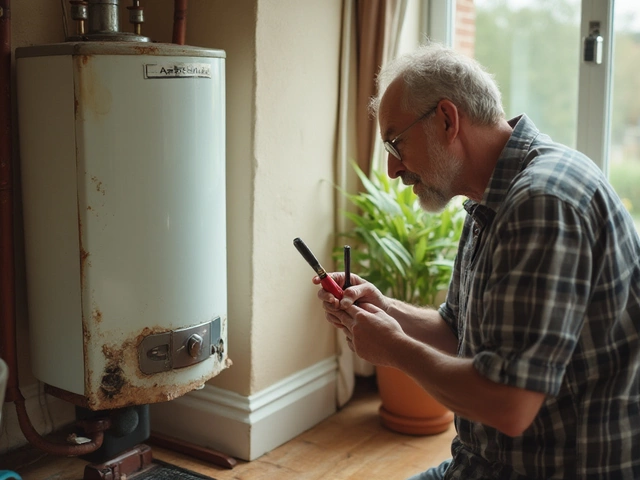If your oven stops heating, the problem is often in the wiring. Before you call a pro, there are a few simple checks you can do yourself. This guide shows you how to work safely, what tools to grab, and the exact steps to re‑wire an electric oven. No jargon, just clear actions you can start on the kitchen floor.
Turn off the power at the breaker – not just the oven switch. A live circuit can give you a nasty shock, even if the oven looks idle. Use a tested voltage tester to confirm the wires are dead before you touch anything.
Wear insulated gloves and keep a dry cloth nearby. If you notice burnt insulation, melted plastic, or a strong smell of ozone, stop and call an electrician. Those signs mean the wiring is damaged beyond a simple fix.
Gather a screwdriver set with insulated heads, a wire stripper, and replacement heat‑resistant wiring (usually 14‑ or 12‑gauge, depending on the oven’s power rating). A small flashlight helps you see inside tight junction boxes.
1. Locate the wiring compartment. Most ovens have a bottom panel you can unscrew. Behind it, you’ll see a black box with terminal screws – this is where the mains wires connect.
2. Label the existing wires. Use masking tape and a marker to note which wire goes to which terminal (L for live, N for neutral, E for earth). This saves you from guessing later.
3. Check the connections. Tighten any loose screws and look for corrosion. A loose live wire is a common cause of an oven that won’t heat.
4. Replace damaged sections. If a wire’s insulation is cracked, cut back to the healthy part with your wire cutter, strip about 8 mm of insulation, and splice in a new piece using a twist‑on connector. Make sure the connector is rated for at least 15 A.
5. Reconnect the terminals. Follow the labels you made earlier. The live (brown or red) goes to the L terminal, neutral (blue or black) to N, and the green‑yellow earth wire to the E terminal. Tighten each screw firmly but avoid over‑tightening, which can strip the threads.
6. Double‑check everything. Give each connection a gentle tug to ensure it’s secure. Then replace the back panel and restore power at the breaker.
7. Test the oven. Turn it on to the lowest heat setting. If it heats up, you’ve fixed the wiring. If it still won’t heat, the issue may be the heating element or thermostat – topics covered in our "Electric Oven Not Heating?" post.
Remember, the goal isn’t just to get the oven working, but to keep it safe for years. Regularly inspect the wiring for wear, especially if you use the oven heavily. A quick visual check once a year can catch problems before they cause a breakdown.
Got a specific wiring question? Drop a comment below or call our Bognor Regis team. We’re happy to walk you through any step you’re unsure about, and we’ll gladly handle the bigger jobs that need a certified electrician.

Thinking about swapping out your electric oven? This article covers how tough the job really is, where people usually get stuck, and what you actually need to know. We break down what tools you really need, what pitfalls you can avoid, and when you should probably call someone who’s done it before. Get ready for straight talk—no tech jargon, just real advice for regular folks. Whether you DIY or call a pro, you’ll walk away ready to make a smart decision.

A failing water heater element can leave you in the chilly lurch just when you need a warm shower. Learn how to diagnose the problem with simple, straightforward steps. This guide covers common symptoms, testing methods, and practical tips for handling a faulty element. We'll explain what's involved and offer insights for DIY repair or knowing when to call a professional.

Curious about how much a new boiler might set you back? This article breaks down the costs involved, from purchasing the unit to installation fees. Understand the factors that influence pricing and learn practical tips to get the most value from your investment. Discover essential maintenance advice and the importance of proper sizing and efficiency ratings. Equip yourself with knowledge before making a decision about your home's heating system.

Wondering when to replace your cooker? This article breaks down the real signs that your cooker is on its last legs, what affects its lifespan, and how to keep it running safely for longer. Get practical tips straight from real-life experience and find out how to spot issues before they turn expensive. Whether you use gas or electric, knowing when to repair or replace makes all the difference in your kitchen.

Extractor fans play a crucial role in maintaining the air quality of your home, yet often go unnoticed until issues arise. Regular servicing of extractor fans can prevent malfunction, improve efficiency, and extend the lifespan of the device. This article explores the importance of servicing extractor fans, signs that show when a service might be needed, and provides maintenance tips to keep these devices in tip-top condition. Learn how a well-maintained extractor fan can contribute to a healthier living environment.

Water heaters are essential in our daily lives, yet they often fail more quickly than expected. Understanding the common causes of these failures can help in preventing them. In this article, we delve into why water heaters often break down prematurely and offer practical tips on extending their lifespan. Regular maintenance and awareness of common issues are key to ensuring your water heater runs efficiently for years.